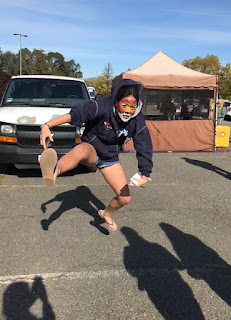In class on Monday, we had a guest speaker come happened to be a Redwood alum and former student of Mr. Stewart to speak with each Sustainable Agriculture class. This impressive and fascinating speaker, Aaron Gilliam, spoke about his land stewardship and management that redefines "good" and "healthy." He argued that animals such as sheep or goats and cows are not the problem, but simply the way we manage them is. His big technique of the company he works for, Sweetgrass Grazing, is to rotate the livestock continuously hitting all sorts of grassland areas. By being mobile and adaptable, he recreates real life animal situations and mimics nature. The two large goals for what he works for is to take down grass that are fire concerns and the thistle populations that are widely disliked. When his company is hired, the majority of the jobs he gets is to maintain specific species that other customers want managed. As he works for a variety of different people, he spreads his idea of the bigger picture of his passion and occupation, which is to create more plant diversity and increase soil health. With the focus of soil health, abundance and productivity, and biodiversity we can use these values in our farm here at Redwood and apply them to jobs and techniques for the future to maintain sustainability in our community.—mary
Mary Tarantino












